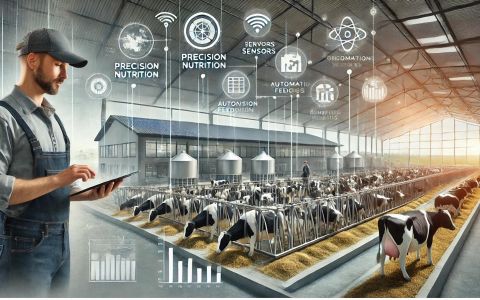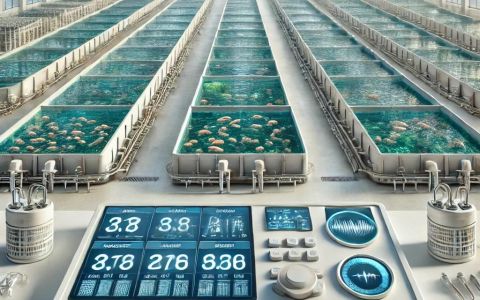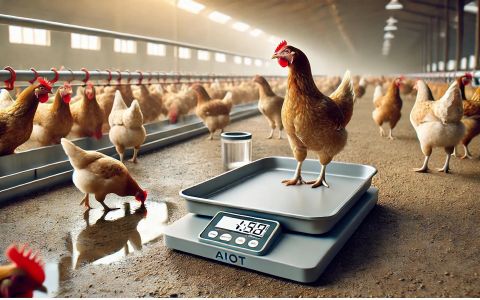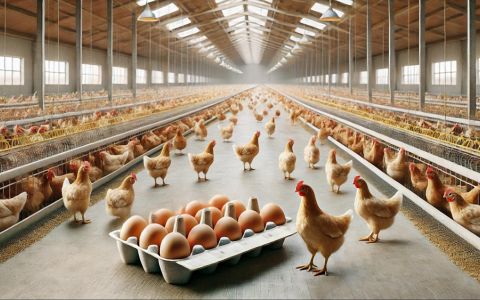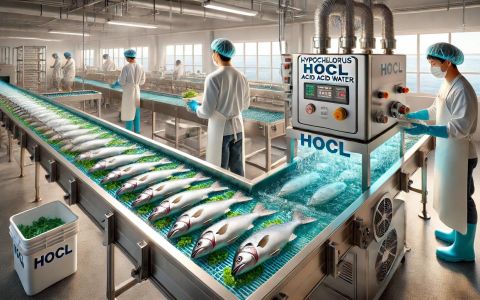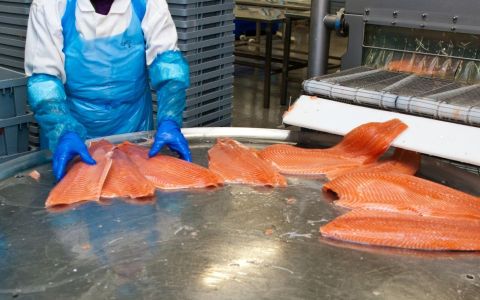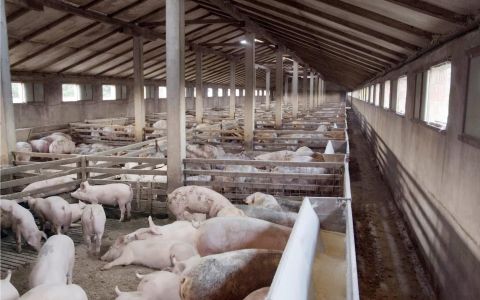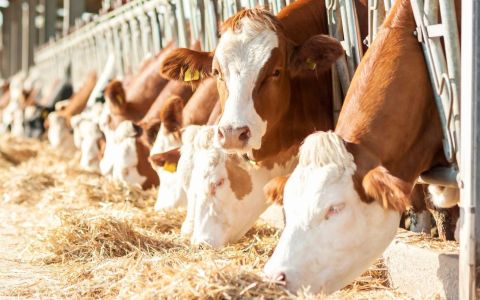Innovative Applications of Carbon Reduction and Circular Technologies in Sustainable Agriculture
In recent years, global warming and climate change have become more pronounced, with countries focusing on reducing greenhouse gas emissions for sustainable development. The agricultural sector, a significant emitter, faces pressure to cut carbon emissions while managing waste. Carbon reduction and circular technologies offer solutions to reduce emissions, improve resource efficiency, and enhance the agricultural environment.
Key strategies for achieving net-zero emissions include low-carbon livestock production, carbon-negative farming methods, reusing agricultural by-products, and promoting green trends. These strategies work together to drive sustainability. However, climate change poses challenges, such as extreme weather events and issues like soil degradation and water scarcity, threatening agricultural production and food security.
Agricultural carbon reduction technologies refer to techniques applied in agricultural production to reduce greenhouse gas emissions. Key methods include:
-
Reducing Pesticide and Fertilizer Use: Excessive use of pesticides and fertilizers leads to soil acidification, water pollution, and greenhouse gas emissions. Precision fertilization technologies, such as using sensors to monitor soil nutrient levels and applying fertilizers according to crop needs, reduce waste and environmental pollution. Additionally, biological pest control using natural predators or microbes reduces reliance on chemical pesticides.
-
Using Renewable Energy: Solar and wind energy can replace fossil fuels in agricultural production, reducing carbon emissions. For example, solar panels can provide power for farming operations, and electric farming equipment, such as electric tractors and harvesters, can replace traditional fuel-powered machinery, cutting emissions and air pollution.
-
Improving Soil Health: Healthy soil can store large amounts of carbon. Increasing soil organic matter, such as returning crop residues or organic fertilizers to the soil, enhances carbon sequestration. Reducing soil erosion through no-till or minimal tillage practices protects soil structure and prevents carbon loss.
-
Developing Precision Agriculture: Precision agriculture uses technology to optimize various aspects of farming, improving resource efficiency and reducing carbon emissions. Techniques like sensor-based monitoring of soil moisture and nutrients, precise fertilization and irrigation, and drone-based remote sensing for crop health management help reduce resource waste and environmental impact.
Agricultural Circular Technology
Agricultural circular technology refers to methods that convert agricultural waste generated during farming into usable resources through reuse, regeneration, and recycling. These technologies help reduce the environmental impact of agricultural waste and enhance resource efficiency. Below is a summary of agricultural waste and its potential uses:
| Types of Waste: | Potential Uses: |
| Crop Residues (e.g., Rice Straw) | Biogas Production, Composting, Biochar Production |
| Livestock Manure | Biogas Production, Composting, Organic Fertilizer |
| Food Processing Waste (e.g., Fruit Peels) | Feed Additives, Organic Fertilizer, Biochar Production |
| Agricultural Wastewater | Irrigation Water, Biogas Production |
-
Agricultural Waste Recycling: Agricultural waste, such as straw and livestock manure, can be converted into organic fertilizers and energy through composting and biogas production. Composting turns organic waste into nutrient-rich fertilizer, improving soil fertility. Biogas production generates energy by using anaerobic digestion of organic waste.
-
Wastewater Treatment and Reuse: After treatment, agricultural wastewater can be reused for irrigation, reducing water resource waste. For example, ecological engineering techniques like constructed wetlands can purify agricultural wastewater by removing contaminants, making it suitable for irrigation.
-
Biogas Production: Organic waste from livestock manure and crop residues can be converted into biogas through anaerobic digestion. This biogas can be used for electricity generation and heating, reducing reliance on fossil fuels and lowering greenhouse gas emissions.
-
Biochar Production: Agricultural waste can be transformed into biochar through pyrolysis, improving soil quality, fertility, and carbon sequestration. Biochar's porous structure enhances soil water retention, aeration, and provides essential nutrients for plant growth.
Carbon Reduction and Circular Technology in Sustainable Agriculture Applications
Taiwan Cases:
-
Reducing Fertilizer Use: The Taiwan Agricultural Research Institute has developed agricultural land management methods tailored for Taiwan, helping farmers manage their land, livestock, and farming practices through diverse approaches. This can reduce methane and nitrous oxide greenhouse gas emissions while enhancing soil carbon sequestration.
-
Developing Circular Economy: The Central Taiwan Division, in collaboration with local governments, developed a "Digital Eco-material Pre-control Production Equipment" to introduce energy-saving biochar production technology for local needs. This transforms agricultural waste into functional ecological materials used for soil improvement by local wineries and farmers. Additionally, Taiwan has established the "Agricultural-Food Circular Concept Factory," converting agricultural waste into high-value products such as feed and health supplements, promoting the development of a circular economy in agriculture.
-
Smart Agriculture: A research team from National Yang Ming Chiao Tung University has developed a "Toxin-free Smart Agriculture Management Platform." This platform integrates biotechnology, information communications, and agricultural expertise to analyze farm data using AI, enabling smart monitoring of farm environments and providing farmers with solutions for fertilization and pest control.
International Cases:
-
France: The French government is addressing nitrogen emissions caused by the excessive use of fertilizers. By 2030, it aims to reduce fertilizer use on farms by 15%. Farms that fail to meet this goal within two years will face a tax penalty.
-
Japan: Japan has implemented the "J-Credit" carbon trading system, allowing carbon reduction benefits in agriculture to be converted into economic income through cross-sector transactions. This system helps the country achieve carbon neutrality by allowing farmers to trade their carbon credits in the market, incentivizing the adoption of carbon reduction technologies.
-
Spain: Spain promotes circular agriculture, transforming waste into resources while following the three design-driven principles of circular economy: (1) eliminating waste and pollution, (2) circulating products and materials (achieving maximum value), and (3) restoring nature. These principles, proposed by the Ellen MacArthur Foundation, aim to promote efficient resource use and reduce environmental pollution.
Benefits of Carbon Reduction and Circular Technology in Sustainable Agriculture
The application of carbon reduction and circular technologies offers various benefits for sustainable agricultural development:
-
Reducing Greenhouse Gas Emissions: Measures such as reducing pesticide and fertilizer use and using renewable energy can significantly cut greenhouse gas emissions during agricultural production, helping to mitigate climate change.
-
Improving Resource Efficiency: Circular technologies can convert agricultural waste into valuable resources, enhancing resource efficiency and reducing waste. For example, using crop residues for biogas production reduces air pollution from straw burning and generates energy.
-
Improving Soil and Water Quality: Reducing pesticide and fertilizer use and increasing soil organic matter improve soil health and water quality, benefiting the agricultural ecosystem. Healthy soils lead to better crop yields and quality while reducing environmental pollution.
-
Enhancing Agricultural Product Quality: The application of carbon reduction and circular technologies can improve product quality and add value to agricultural products. For instance, products from organic farming, which avoids chemical pesticides and fertilizers, are healthier, safer, and more popular with consumers.
-
Promoting Precision Agriculture: The use of digital tools fosters the development of precision agriculture, improving production efficiency and resource utilization. For example, farm management systems like FarmERP help farmers track and analyze data, such as soil moisture and crop conditions, enabling precise field management. Dole's QC image recognition system uses image analysis to quickly assess fruit quality, increasing grading efficiency and reducing labor costs.
-
Agricultural Carbon Sequestration: Unlike other industries, agriculture has the potential to sequester carbon, storing atmospheric CO2 in soil, forests, and oceans. Measures such as carbon-negative farming, afforestation, and ocean ecosystem protection can increase agricultural carbon sequestration, contributing to climate change mitigation.
Challenges of Carbon Reduction and Circular Technology in Sustainable Agriculture
Despite the significant role of carbon reduction and circular technologies in sustainable agricultural development, several challenges remain:
-
Technology Costs: The application of some carbon reduction and circular technologies, such as biogas power generation and biochar production equipment, can be costly and require significant investment. For small-scale farmers, the cost of implementing these technologies may be unaffordable.
-
Policy Support: The promotion of carbon reduction and circular technologies requires government policy support, such as financial subsidies and the development of relevant standards and regulations. Government guidance and support can reduce the risk for farmers adopting new technologies and help facilitate their widespread use.
-
Farmer Acceptance: Some farmers may have low acceptance of carbon reduction and circular technologies due to insufficient knowledge of new technologies or concerns about potential risks. Training and education are needed to raise awareness, improve understanding, and alleviate concerns among farmers.
-
Market Demand: The market demand for products produced through circular agriculture, such as organic produce and biochar, is limited and requires expansion. Consumer awareness and demand for sustainable agricultural products are key drivers for the development of circular agriculture.
-
Climate-Smart Agriculture (CSA): CSA is an integrated agricultural development strategy aimed at balancing food security and climate change challenges. CSA focuses on increasing agricultural productivity, enhancing system resilience, and reducing greenhouse gas emissions. However, its implementation requires cross-sector collaboration and coordination, as well as technical support and capacity building for farmers.
Future Development Directions for Carbon Reduction and Circular Technology in Sustainable Agriculture
To better promote the application of carbon reduction and circular technologies in sustainable agriculture, the following directions are needed:
-
Strengthening Research and Development: Enhance R&D in carbon reduction and circular technologies to develop more cost-effective and suitable technologies. Additionally, improve the promotion and application of these technologies. For example, developing low-cost biochar production technologies or creating biogas power generation equipment suitable for small-scale farmers.
-
Establishing Comprehensive Policies and Regulations: Governments need to formulate relevant policies and regulations to support the development of carbon reduction and circular technologies, such as providing financial subsidies, tax incentives, and more. Policies and regulations can provide incentives for the application of these technologies while ensuring their environmental and social benefits.
-
Raising Public Awareness: Increase public awareness and understanding of carbon reduction and circular technologies to promote public participation and support for sustainable agricultural development. Consumer demand for sustainable agricultural products is a major driver for the adoption of these technologies.
-
Promoting International Cooperation: Strengthen international collaboration and exchanges to share experiences and technologies related to carbon reduction and circular technologies. This can accelerate the transfer and diffusion of technologies and help jointly address the challenges of climate change.
-
Consumer Education: Educate consumers about sustainable agriculture, encouraging them to choose sustainably produced agricultural products, such as organic produce or products with traceability. Consumer choices can guide agricultural production towards more sustainable practices.
-
Integrated Strategies: Develop integrated sustainable agricultural development strategies that consider economic, social, and environmental factors, ensuring the economic viability, social benefits, and environmental impacts of sustainable agriculture. For example, when promoting carbon reduction technologies, it is also important to consider the livelihoods of farmers and rural development.
Summary
The application of carbon reduction and circular technologies is a crucial pathway for achieving sustainable agricultural development. By reducing agricultural carbon emissions, improving resource efficiency, and enhancing the agricultural ecological environment, these technologies promote sustainability in agriculture, ensure food security, and help address the challenges of climate change. Sustainable agricultural development requires not only technological advancements but also policy support, farmer participation, and public awareness.
In the future, efforts should focus on strengthening research and development, establishing comprehensive policies and regulations, raising public awareness, and promoting international cooperation to advance the application of carbon reduction and circular technologies in sustainable agriculture, contributing to the achievement of global sustainable development goals. Additionally, the development of sustainable agriculture must balance economic, social, and environmental benefits to ensure its long-term success. Only through continuous effort and innovation can we overcome challenges and achieve the goal of sustainable agricultural development, creating a better future for societies.
References
- 農業淨零四大主軸, 檢索日期:1月 22, 2025
- 因應氣候變遷與淨零排放趨勢下、運用智慧科技與循環經濟之永續農業策略, 檢索日期:1月 22, 2025
- 亮點實驗室】實踐淨零碳排,引領臺灣永續發展| 農業零碳技術與管理創新研究中心, 檢索日期:1月 22, 2025
- 台灣農業減碳方法學大步向前行 - 努力小農, 檢索日期:1月 22, 2025
- 农业农村减排固碳十大技术模式发布, 檢索日期:1月 22, 2025
- 探勘國際農業淨零碳排作為, 檢索日期:1月 22, 2025
- 認識循環農業, 檢索日期:1月 22, 2025
- 農業廢棄物循環系統 - 慶豐年科技農業有限公司, 檢索日期:1月 22, 2025
- 淨零-循環- 農業科技決策資訊平台, 檢索日期:1月 22, 2025
- 全台首家農食循環概念工廠啟用農廢轉化為飼料、保健食品, 檢索日期:1月 22, 2025
- IP園地-成功案例及商品化新知-「IoT+AI+生技」打造無毒農業科技名揚海外 - 經濟部智慧財產局, 檢索日期:1月 22, 2025
- 循環農業有效利用資源更永續日本與西班牙循環農業案例介紹 - 農傳媒, 檢索日期:1月 22, 2025
- 科技協助農業減碳救地球-工業技術與資訊月刊-出版品, 檢索日期:1月 22, 2025
- 邁向2050年淨零農業部門盤點碳匯潛力:兼顧生活與生態政策獎勵搭配ESG 促農業永續 陳吉仲 - 農傳媒, 檢索日期:1月 22, 2025
- 認識永續農業發展與行動建議 - CSRone, 檢索日期:1月 22, 2025
- 農業結合資通訊科技的綠色革命數位工具於國外農業應用現況 - 農傳媒, 檢索日期:1月 22, 2025
- 農業脫碳化未來願景-因應氣候變遷的挑戰與可能性, 檢索日期:1月 22, 2025
- 《科技與創新》減碳升級永續農業生態 - 自由財經, 檢索日期:1月 22, 2025
- 研討會分享 氣候變遷下的農業永續系統與循環經濟建構國際研討會, 檢索日期:1月 22, 2025
- 2023作物永續栽培體系國際研討會 - 農業部臺中區農業改良場, 檢索日期:1月 22, 2025
- 循環農業國際趨勢報告, 檢索日期:1月 22, 2025
- 香港未來發展方向:商業總部 - HKTDC Research, 檢索日期:1月 22, 2025
- 發展方向及未來展望Development Direction And Future Outlook, 檢索日期:1月 22, 2025
- 2030年大趋势:全球力量如何塑造未来十年 - TRACC, 檢索日期:1月 22, 2025
- 超限未來10大趨勢The Extreme Future, 檢索日期:1月 22, 2025
- 創業趨勢分析:掌握未來發展方向,把握無限商機, 檢索日期:1月 22, 2025
- 氣候變遷下的永續解方:「泛有機農業」與「未來餐桌」, 檢索日期:1月 22, 2025
- 科技研究 - FFTC, 檢索日期:1月 22, 2025
- 〈工業技術與資訊〉科技協助農業減碳救地球, 檢索日期:1月 22, 2025
Other News
Integrating smart technologies such as sensors, IoT, and AI into agriculture and livestock sectors enables precise nutritional management, enhancing production efficiency, reducing waste, and promoting environmental sustainability.
This innovative approach combines solar photovoltaic power generation with smart aquaculture technologies, enhancing land use efficiency, stabilizing water quality, and improving farming environments to boost productivity and sustainability in the aquaculture industry.
Integrating artificial intelligence and Internet of Things technologies, AIoT automated poultry scales utilize image recognition to calculate poultry numbers and average weights, uploading data to the cloud for real-time monitoring, thereby optimizing feed management and enhancing farming efficiency.
In 2023, Taiwan's swine industry demonstrated resilience and innovation, supported by government policies such as tax exemptions and the promotion of self-sufficient feed ingredients, leading to a stable foundation and breakthroughs in international markets.
Discover how antibiotic-free feed formulations are revolutionizing the layer industry, enhancing hen health, boosting egg quality, and paving the way for sustainable and safe food production.
Explore how hypochlorous acid water (HOCl) serves as a safe, eco-friendly disinfectant, enhancing biosecurity and promoting sustainable practices in modern farming and aquaculture.
Explore how Taiwan's fisheries industry is advancing seafood processing and cold chain logistics to minimize waste, ensure product quality, and cater to diverse market needs.
Discover how Taiwan's livestock industry is leading the circular economy by turning manure into green energy, organic fertilizer, and valuable industrial resources.
Bacillus and ammonia-oxidizing bacteria are game-changers in livestock production, enhancing animal performance and reducing environmental impact. Through advanced strain selection and innovative applications, these microbes optimize feed efficiency, mitigate ammonia emissions, and promote sustainable farming practices
Explore how Taiwan's green onion farmers are adopting Integrated Pest Management (IPM) strategies to combat pests, reduce pesticide use, and enhance crop yields. Learn about government initiatives, research implementations, and the benefits of sustainable farming practices in the agriculture industry.











